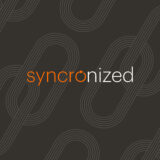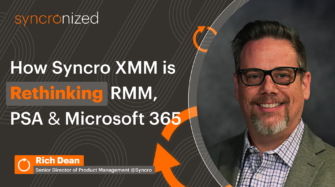If you’re considering outsourcing your IT management and have been researching service providers, you may have stumbled across the term, “RMM.” So, what is RMM — and is it important?
“RMM” is short for “remote monitoring and management.” “RMM” can mean the process of remote monitoring and management and/or the technology technicians use to do that work. That’s the simplest answer to “What is RMM?” but it doesn’t explain why RMM technology is important, what it does, and who uses it.
This post goes beyond the simple RMM definition and explains the value it brings to businesses.
What does RMM software do?
RMM software allows technicians to remotely monitor client endpoints — desktops, laptops, servers, routers, switches, firewalls, storage systems, and more. In short, an RMM solution helps keep everything up and running smoothly.
Who uses RMM software?
In-house IT teams might use RMM platforms to manage devices and software for remote and hybrid employees. Generally, though, RMM software is designed for managed service providers (MSPs).
MSPs are businesses that handle some or all IT services for multiple clients. They use RMM software to perform proactive maintenance on client operating systems, automate patch management, and detect and respond to critical issues.
Managed service providers rely on remote support software to prevent unauthorized access to client data, networked devices, and business systems. RMM tools incorporate proactive issue detection, so MSPs can respond quickly to problems and prevent business disruptions for clients. Some remote monitoring and management tools have advanced automation capabilities that help MSPs automate remediation for common problems.
RMM software is often used in conjunction with other types of software, such as help desk software and business operations software. The best RMM tools include all of the features MSPs need for client-facing work, as well as internal business management.
The evolution of remote monitoring and management
RMM systems first emerged in the early 90s as a way for IT admins to manage and monitor desktop PCs from a central location. In conjunction with Simple Network Management Protocol (SNMP) and other early remote management tools, RMM software allowed admins to troubleshoot and fix PC problems without being on-site. This was a significant breakthrough for the IT industry. Businesses save time and money by resolving issues remotely, freeing up more time to focus on innovation, learning new skills, and improving client service.
In the mid-2000s, as businesses increasingly adopted cloud computing, RMM tools helped MSPs manage servers and other devices, in addition to PCs.
Today, RMM solutions are more powerful and sophisticated than the early versions. IT technicians can easily use them to manage PCs, mobile devices, servers, routers, switches, storage client systems, and more.
What are the benefits of RMM for MSP clients?
MSPs that use RMM software help businesses save money by reducing the need for on-site support. Even when businesses have an internal IT team, those technicians don’t work around the clock, and MSPs can use RMM automation to protect client systems and endpoints, day or night.
Additional benefits of RMM software and services include:
Minimal disruptions
MSPs that use RMM for real-time monitoring reduce the risk of disruptions to your business. Technicians can quickly identify and address security risks, server errors, and software glitches before those issues become costly roadblocks.
Top-tier security integrations
The best cybersecurity software can be costly, but MSPs that integrate third-party security solutions may offer enhanced security at a discounted rate or as part of a service tier. Syncro, for example, offers Acronis Cyber Protect Suite and Acronis support through its platform, and MSPs who use that greatly enhance their clients’ security posture.
Compliance support
Companies should actively monitor their systems for compliance with government and industry regulations, but that’s a time-consuming process. RMM software can automate compliance-related tasks like vulnerability scanning and reporting.
Transparency
MSPs that use remote monitoring tools can customize reports that show you the status of support requests, resolved security vulnerabilities, and recurring issues within your network. MSPs can also show businesses when a third-party provider will end support for any of their devices or software. With that information, businesses can better forecast costs for acquiring new technology.
How do MSPs choose RMM software?
There are many different RMM tools on the market, so MSPs often spend a lot of time researching RMM software features before they choose a solution.
Some RMM software works with Windows devices but isn’t compatible with MacOS, which limits an MSP’s ability to grow their business. And RMM software may be specific to mobile devices, without features for monitoring client networks.
In choosing a remote management platform, MSPs also need to consider costs. RMM software that charges MSPs based on the number of client endpoints can become prohibitively expensive as MSPs add clients. An RMM solution that charges MSPs based on the number of users — not client endpoints — is much more scalable, with predictable costs.
Best practices for introducing RMM solutions
It’s essential to define your goals before partnering with an MSP to manage your IT services. Are you looking to improve network reliability, reduce downtime, or improve security posture? Are you looking for support that can help you move to a fully remote business model? The answers to these questions will lay a solid foundation for change management.
When implementing RMM software, it’s important to focus on change management and the potential impact on company culture. Employees may have a lot of questions about how an MSP manages remote monitoring and management, such as:
- What is RMM?
- What information does RMM software collect from my devices?
- If I use my own device for work, can managed service providers access my private information?
- Does hiring an MSP business change anything about my job?
- How will I know if a managed service provider is performing routine maintenance tasks on my device?
An experienced managed service provider will be able to answer these questions.
Many of the concerns employees might have about privacy are why RMM software has such a high degree of customization. For example, MSPs can configure a user’s personal device to have two distinct identities — one that’s work-related, and one that’s private and not subject to remote access.
Change can be difficult, and it’s essential to manage expectations and address concerns your team may have about the new software. Be prepared for some growing pains. Anytime you introduce new processes into an organization, there can be some confusion and discomfort.
Is it time to try RMM services?
Remote monitoring and management services can help you increase efficiency, avoid downtime, and improve security. MSPs that use Syncro make it easy for clients to transition to outsourced IT management. Learn more about what MSPs do and trends in the industry with this Syncro resource.
Share














